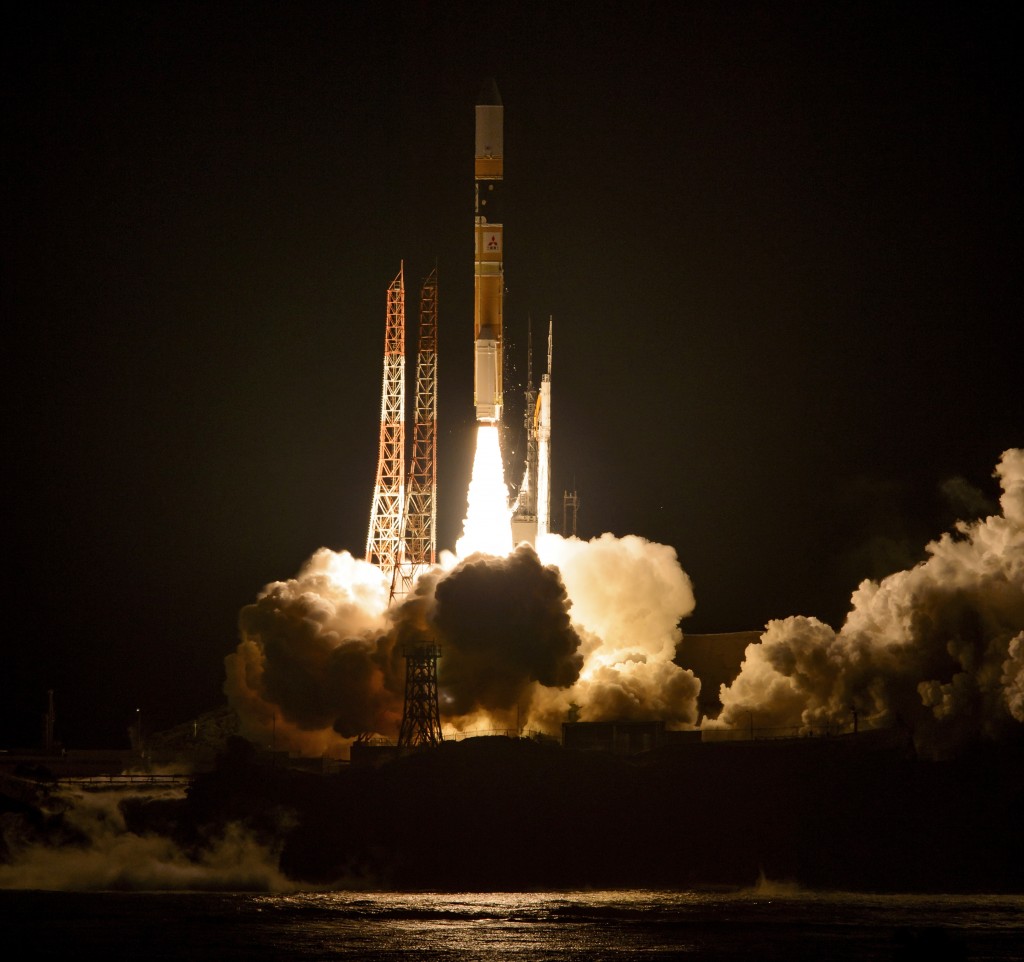
In this image released by NASA, a Japanese H-IIA rocket with the NASA-Japan Aerospace Exploration Agency (JAXA), Global Precipitation Measurement (GPM) Core Observatory onboard takes off from launch pad 1 of the Tanegashima Space Center, Friday, Feb. 28, 2014, Tanegashima, Japan. The satellite will collect data from an international network of existing and future satellites to map global rainfall and snowfall every three hours. AP PHOTO/NASA, BILL INGALLS
TOKYO—Japan successfully launched its latest rocket on Friday, carrying a hi-tech satellite to monitor global rainfall and help meteorologists forecast big storms, according to the Japan Aerospace Exploration Agency (JAXA).
The H-IIA rocket blasted off from a southern Japanese island at 3:37 a.m. on Friday (1837 GMT Thursday) as scheduled, with the Global Precipitation Measurement (GPM) core observatory aboard, JAXA said.
The satellite, jointly developed by Japan and the United States, is designed to collect data from several other satellites in orbit and add that to its own measurements to build up a detailed picture of precipitation around the planet.
Weather forecasters say that with a more detailed and complete map of rain they will be better able to predict extreme events such as typhoons and floods.
On Thursday, Japanese astronaut Koichi Wakata, who is now aboard the International Space Station along with NASA astronaut Rick Mastracchio and Russia’s Mikhail Tyurin, told his 74,000 Twitter followers he was hoping for a smooth launch.
“From the ISS, I wish for the success of the launch,” he wrote.